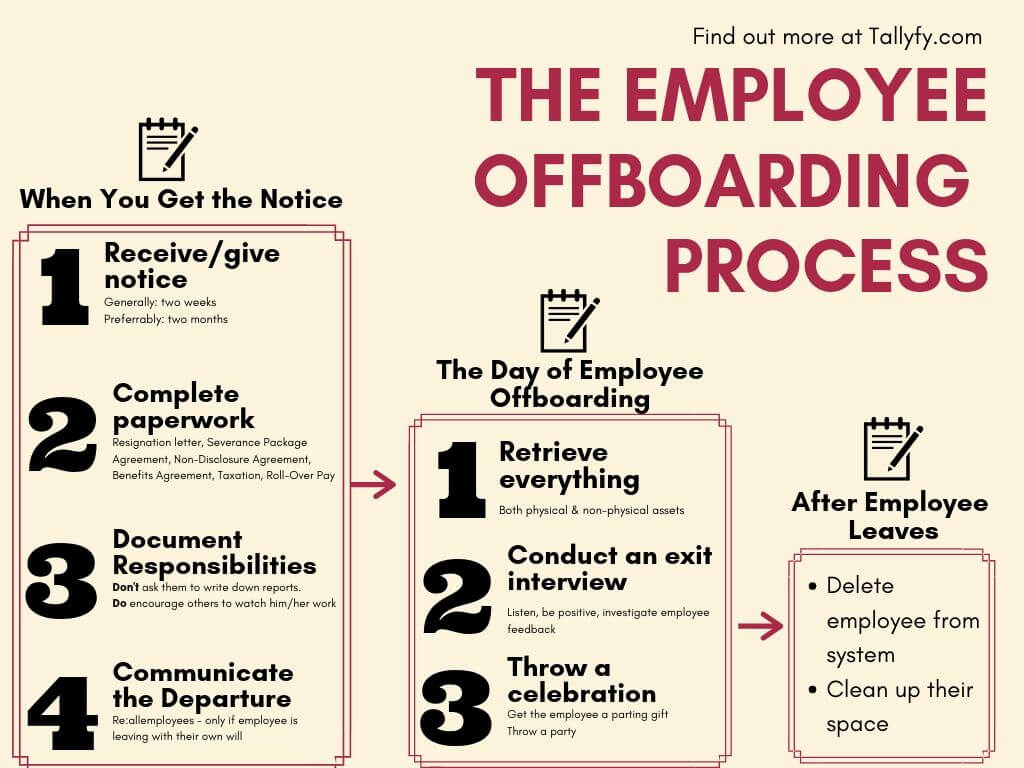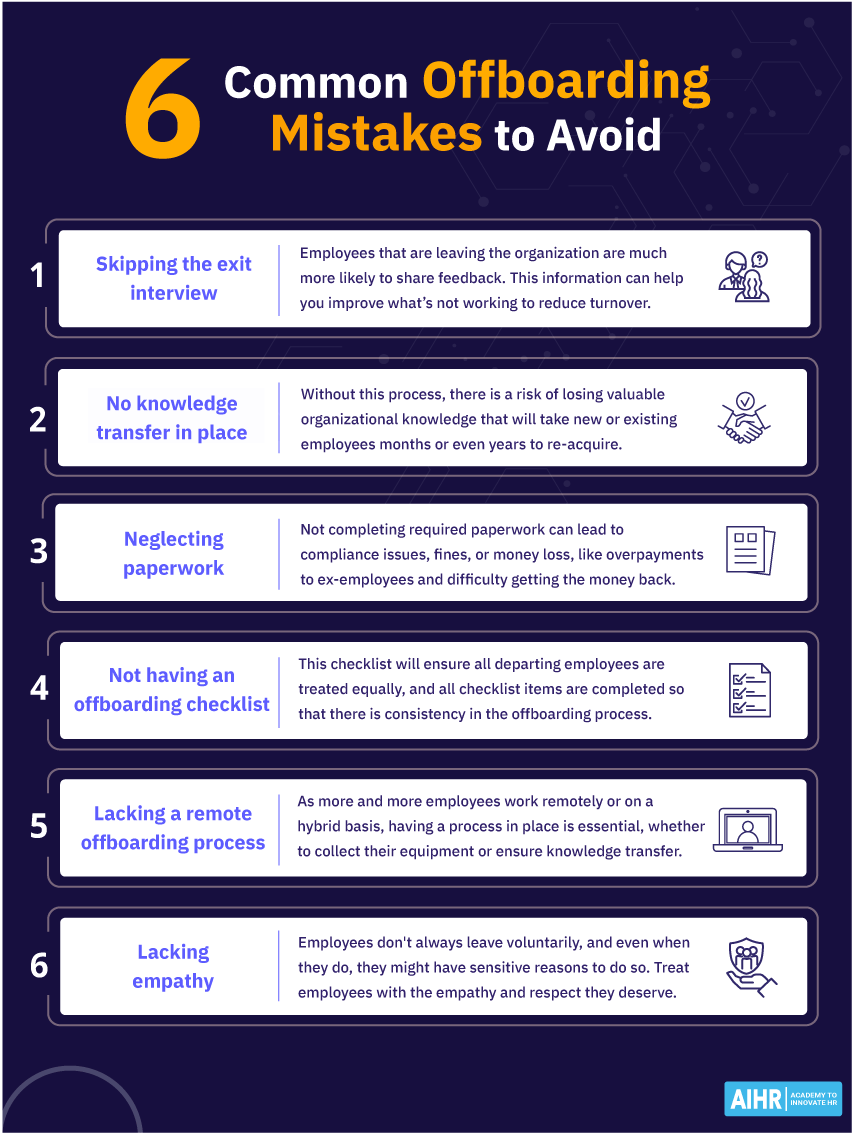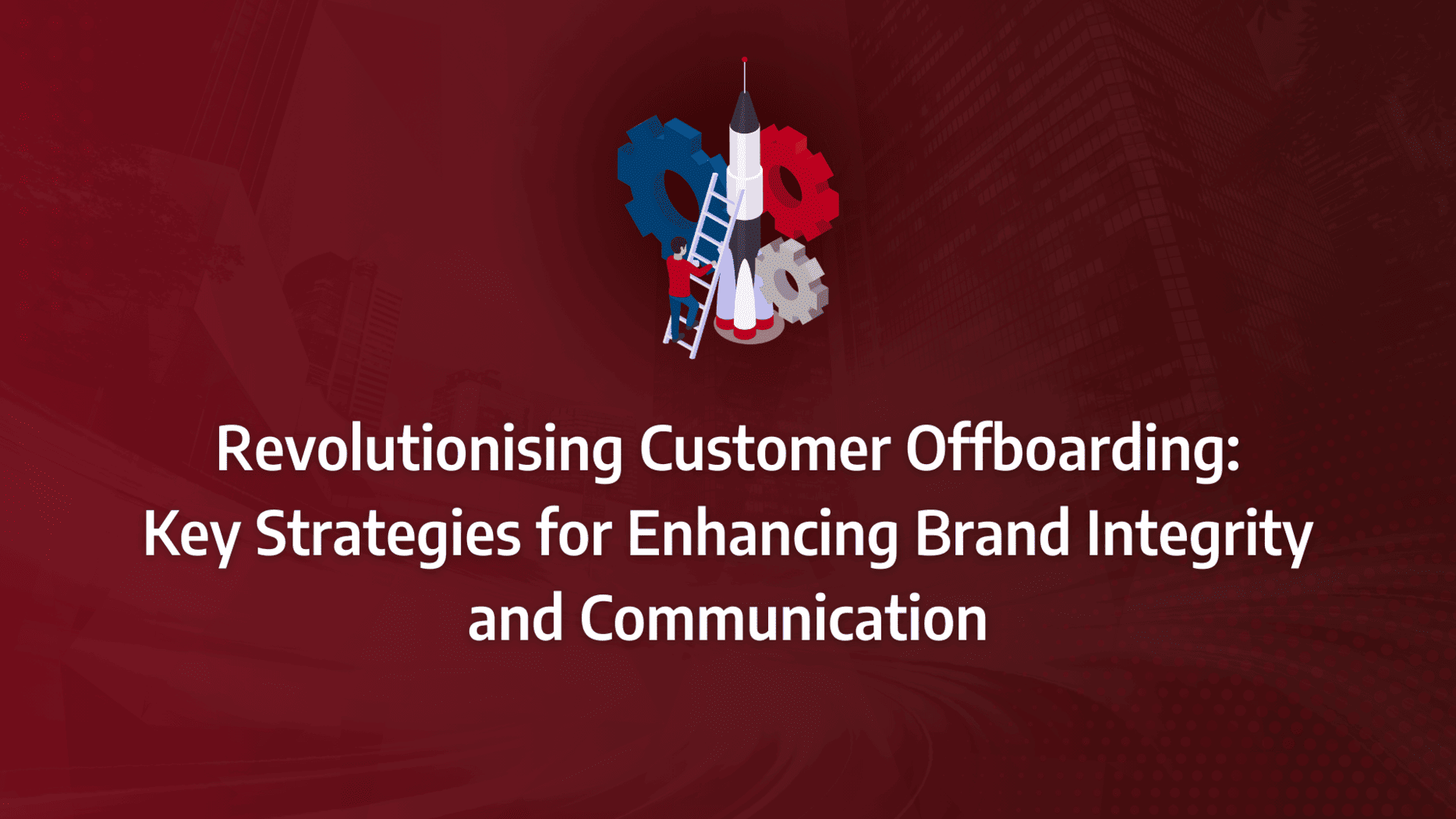Customer offboarding can transform a potentially negative experience into a powerful opportunity to reinforce your brand’s integrity and leave the door open for future engagement. However, without a clear and structured approach, this crucial phase can lead to customer dissatisfaction and reputational damage.
In this guide, we’ll walk you through a step-by-step process to enhance your customer offboarding strategy. From maintaining consistent communication to gathering invaluable feedback, you’ll learn how to turn offboarding into a strategic advantage that strengthens your brand and builds long-term customer loyalty.
- Develop a Structured Offboarding Process: Create a detailed checklist to ensure that all offboarding steps are covered, reducing the risk of customer dissatisfaction.
- Maintain Clear and Empathetic Communication: Use well-crafted templates and scripts to communicate offboarding decisions effectively, preserving brand integrity.
- Gather Feedback for Continuous Improvement: Implement feedback mechanisms during offboarding to gain insights that can refine your customer retention strategies.
- Turn Offboarding into a Positive Experience: Use offboarding as an opportunity to leave a lasting positive impression, encouraging future re-engagement.
- Utilise Data to Enhance Retention Strategies: Analyse the data collected during offboarding to identify patterns and improve your overall customer experience.
What Goes into Conducting an Effective Customer Offboarding?
When considering customer offboarding, the initial thought might be an exit interview or a brief survey. However, the customer offboarding process encompasses much more. While onboarding is about providing customers with a positive first impression of your product and service, offboarding ensures they leave with a lasting favourable impression, effectively reducing churn through continuous improvement.
Reducing Churn through Continuous Improvement
Feedback gathered during the customer offboarding process is invaluable. It’s not just about understanding why customers are leaving; it’s about recognising patterns and common reasons. This insight allows you to proactively address issues and improve the overall customer experience. The information gathered can guide product development teams in introducing new features or refining existing ones, ultimately enhancing customer satisfaction.
Maintaining Brand Image and Reputation
The customer offboarding process is not merely a way to bid farewell; it’s an opportunity to leave a lasting positive impression. Ensuring that customers have a seamless experience, even as they exit, helps maintain your brand’s reputation. A well-executed digital offboarding strategy can prevent former customers from becoming “brand detractors”.
While the focus often lies on creating an effective client onboarding process, it’s crucial to remember the importance of a designated offboarding strategy. The way you conclude a client relationship is just as vital as how you begin it. Providing a thoughtful offboarding experience can officially close a project while reinforcing a positive impression of your business. Here are three compelling reasons why a robust customer offboarding strategy is essential:
It Completes the Client Experience
A comprehensive offboarding process ensures that your clients not only receive excellent services but also enjoy a great overall experience. Concluding the project with personalised touches, such as a handwritten note, can make a significant impact. A well-thought-out offboarding gift allows the relationship to end naturally and leaves the client more inclined to recommend your services. This thoughtful gesture preserves the positive experience and enhances your company’s reputation.
It Creates a Memorable and Lasting Impression
An effective offboarding strategy ends the client experience on a high note, fostering a memorable connection. Clients who recall receiving a thoughtful offboarding gift are more likely to refer your business to others. While onboarding strategies are important, offboarding often leaves a stronger impression because it is the last interaction the client has with your company. Research indicates that 77% of clients maintain strong relationships with brands they’ve had positive experiences with for over a decade.
It Provides Opportunities for Valuable Feedback and New Clients
The offboarding process is an ideal time to request testimonials and referrals. Constructive feedback during this phase can help identify gaps in your services and provide valuable content for testimonials. Understanding external perspectives on your work helps improve your offerings and reassures potential clients of your service quality. Moreover, 83% of loyal customers refer companies they are satisfied with. A thoughtful offboarding gift will keep your services top-of-mind when someone seeks a recommendation.
What Matters Most?
Creating a culture that prioritises personalised exit interviews can uncover insights that drive future retention strategies. Clients often discover that analysing cancellation trends through customer data leads to valuable improvements in offerings. Typically, fostering a feedback culture during offboarding not only aids in understanding customer sentiments but also enhances brand loyalty.Get In Touch
What essential elements should be included in a customer offboarding process?
1. Send an Offboarding Survey Post-Downgrade or Exit
First and foremost, it’s crucial to acknowledge that response rates might be low once customers decide to leave. After all, there is minimal incentive for someone to provide feedback after terminating their service, particularly if they are dissatisfied.
Regardless of the offboarding strategy employed, the key is to seek a balanced mix of qualitative and quantitative feedback. This approach ensures you gather comprehensive insights that can inform future improvements in your customer offboarding process.
2. Request a Brief Offboarding Call
While surveys can yield valuable data, the true gold in the customer offboarding process lies in phone interviews. Verbal conversations allow customers to express their thoughts more naturally, offering deeper insights into their experiences and suggestions for improvement.
However, securing participation for these calls can be challenging. Start by targeting those who have already shown a willingness to provide detailed feedback, perhaps through previous qualitative responses or support channels like NPS scores. To enhance participation, consider offering incentives such as Amazon or other gift cards for a 5 to 10-minute call.
3. Simplify the Leaving Process
Some companies make the mistake of trying to retain customers at all costs, often leading to a frustrating exit experience. If a customer has decided to leave, making the process difficult will only worsen their perception of your service and potentially deter future customers.
To ensure a smooth digital offboarding experience, avoid hiding downgrade options or forcing phone calls for basic cancellations. Treat the offboarding process with the same respect and attention as the onboarding process. Map out the cancellation journey from the customer’s perspective, involving your product, support, and marketing/sales teams to discuss:
- The screens customers encounter.
- The emails they receive.
- Any scripts used by account managers or salespeople.
Source: Jobera
4. A Goodbye Video
A personalised goodbye video can add a memorable touch to the digital offboarding process. Just as you might have created a welcome video, a short, sincere video thanking the customer for their time and reflecting on your shared journey can leave a positive final impression.
5. Package Recap
This is an excellent opportunity to remind your client of the specifics of your collaboration. Include an overview of the chosen package, contract and payment terms, and a summary of the goals and intentions set at the start. This recap reinforces transparency and ensures all details are clear, especially if there are any outstanding invoices.

What are the different types of customer offboarding I should be aware of?
Let’s delve into the various types of customer offboarding and the challenges they present.
Pausing Subscriptions
In many cases, the best outcome for a customer offboarding process is when a customer decides to pause their subscription rather than cancel outright. A pause is preferable as it allows the customer to maintain access to their data and resume payments when they are ready. This method keeps the door open for future engagement, and your team doesn’t have to refill the sales funnel — simply remind paused customers of the value they’re missing during their break.
Cancelling Subscriptions
When a customer cancels their subscription, it usually means that payments cease, but their data remains intact. This flexibility allows customers to return and re-subscribe to a paid tier in the future if they choose, without losing their previous data or settings.
Deleting Accounts
In some situations, customers may opt to delete their accounts entirely, typically for security or privacy reasons. This action means that all data is permanently removed from your servers, ensuring that the customer cannot return without starting anew.
Challenges in Customer Offboarding
Customer offboarding is inherently complex, especially for SaaS solutions deeply integrated into a customer’s workflow. Here are the two primary challenges and strategies to overcome them:
- Motivating Customers for the Offboarding Process
Disgruntled customers often resist participating in an offboarding process, perceiving it as unnecessary. The key is to position this process as beneficial for them. Here are some strategies to enhance engagement:
- Build Trust Early On: Customers who trust your brand are more likely to engage in the offboarding process. Establish a genuine relationship from the beginning.
- Transparency: Clearly communicate why the offboarding process is necessary and what it entails. Many customers appreciate directness and honesty.
- Show Past Outcomes: Demonstrate how previous customer feedback has led to tangible improvements. This shows customers the value and impact of their feedback.

- Effective Utilisation of Offboarding Data
Collecting feedback is one thing, but acting on it is another. The real challenge lies in identifying patterns within the feedback and making informed decisions based on this data. Here are some methods to streamline this process:
- Segregate Feedback: Develop a system to categorise feedback by its nature, whether it pertains to user interface issues or core functionality suggestions. This categorisation directs the feedback to the appropriate teams.
- Monthly Roundtables: Hold regular roundtables with cross-functional teams to ensure that feedback is heard and acted upon. This is part of a comprehensive Voice of the Customer (VoC) framework.
- Offboarding Feedback Repository: Establish a central repository for all offboarding feedback. This could be a simple spreadsheet or a sophisticated CRM tool. Tracking, analysing, and acting on feedback becomes more manageable with a centralised system.
By addressing these challenges with strategic solutions, you can create a more effective customer offboarding process, ensuring that customers leave with a positive impression of your brand and providing valuable insights for continuous improvement.
Our Tactical Recommendations
Implementing a structured offboarding process ensures that customers leave with a positive impression, reflecting your brand values. Using automation tools streamlines offboarding tasks, preventing customers from feeling neglected. Additionally, creating a targeted re-engagement strategy for former customers often opens doors to renewed business relationships.Get In Touch
Comprehensive customer offboarding checklist for you to steal
Clear Transition Strategy
Navigating customer offboarding can be challenging, but a well-structured plan can ease the process. Develop a comprehensive guide that walks your clients through each step of offboarding. This should cover how services will be transitioned, data transferred, assets returned, and account management concluded. Clearly outline the roles and responsibilities of each party, including timelines and deadlines from the initial notification to the contract’s end.
Detailed Service Summary
Provide a thorough report detailing all the services rendered, accomplishments achieved, and significant milestones reached throughout the client relationship. Use specific metrics to quantify these deliverables, illustrating the impact your services have had on the client’s business. This summary helps both parties acknowledge the tangible outcomes as the relationship concludes and can be a valuable reference for future engagements.
Source: Folksrh
Final Financial Reconciliation
Issue formal documents that clearly detail all financial matters that need to be addressed. This should include final invoices and any outstanding payments. Provide comprehensive accounting summaries and historical billing statements to present a complete financial overview, preventing future disputes and ensuring a smooth conclusion.
Secure Data Migration Plan
Detail the procedures for transferring or securing any data or account information. This plan should include:
- Exporting and securely transferring essential customer data as per their specifications.
- Backing up and removing any proprietary information stored on client systems.
- Verifying and documenting internal data deletion protocols after migration.
Request for Referrals and Feedback
If your client had a positive experience, encourage them to refer your services to others. Invite them to join your referral programme and express your appreciation for any recommendations they can provide. Additionally, be open to constructive criticism. Request feedback as it can offer valuable insights to help improve your services in the future.
Open Door for Future Collaborations
Conclude the offboarding process on a positive note by expressing your willingness to collaborate again in the future. Make it clear that your interest in their success extends beyond the current engagement. Leaving the door open for potential projects or partnerships shows your ongoing commitment to their success and can foster long-term professional relationships.
By meticulously following this customer offboarding guide, you can ensure a seamless transition for your clients, uphold a positive brand image, and gather critical feedback for continuous improvement. This structured approach not only enhances client satisfaction but also strengthens your business operations and opens doors for future opportunities.







